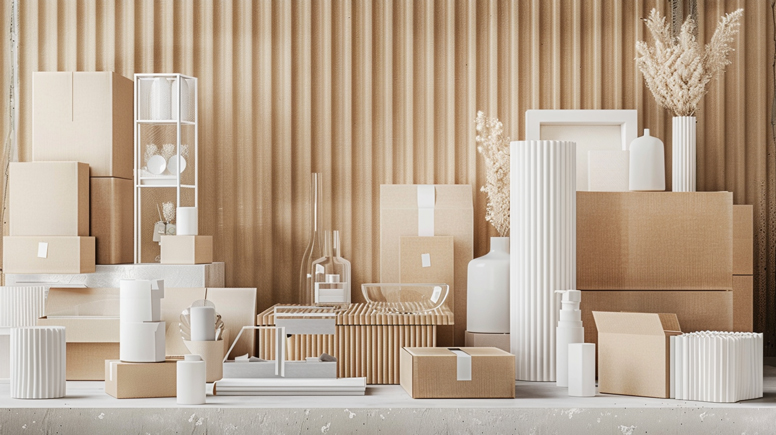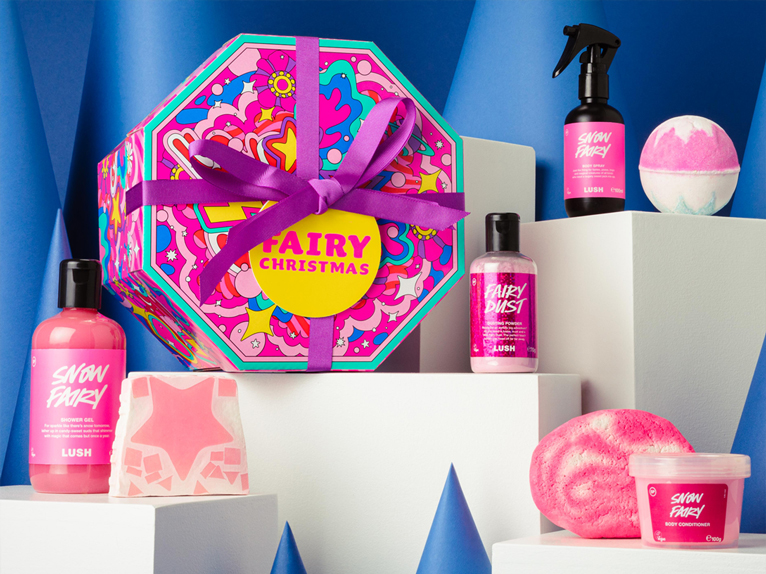Mastering Sustainable Packaging: Understanding Cardboard vs. Corrugated

By Brad Holmes|June 21, 2024|7 mins read
The choice of packaging goes beyond mere functionality; it encompasses a responsibility to our planet. Sustainable packaging materials not only protect goods during transit but also leave a lasting environmental footprint. Understanding the distinction between cardboard and corrugated shipping boxes, and embracing eco-friendly sustainable packaging practices, has become paramount in meeting consumer demands and sustainability goals.
Importance of Understanding Packaging Differences
Cardboard, with its versatility and recyclability, has long been a staple in packaging various products, from electronics to household goods. In contrast, corrugated shipping boxes offer enhanced durability and protective properties, making them ideal for safeguarding fragile items during shipping.
Embracing Eco-Friendly Solutions
Today, businesses face increasing pressure to adopt eco-friendly packaging solutions. Consumers are increasingly aware of the environmental impact of their purchasing decisions and favor companies that prioritize sustainability. This shift has prompted innovations in packaging design, materials, and recycling processes, paving the way for a more sustainable future.
Throughout this blog post, we will delve into the definitions, uses, environmental impacts, and advantages of both cardboard and corrugated shipping boxes. We will also explore the benefits of sustainable packaging materials such as biodegradable, compostable, and recyclable options. Additionally, practical tips for small businesses and creative eco-friendly packaging ideas will be shared, along with insights into leading companies championing sustainable packaging practices.
Join us on this journey to discover how thoughtful packaging choices can make a significant difference in reducing environmental impact while meeting the needs of today’s conscientious consumers.

At a Glance
Understanding Cardboard
Definition and Uses of Cardboard
Cardboard is a generic term used to describe a versatile material made from heavy paper-pulp or paperboard. It’s commonly used in packaging due to its lightweight yet sturdy nature. Cardboard comes in various forms, including single-ply sheets and thicker multi-layered boards. Its primary uses range from creating boxes for shipping and storage to crafting projects and even disposable tableware.
Environmental Impact of Cardboard
From an environmental perspective, cardboard holds appeal due to its recyclability. It’s typically composed of fibers sourced from wood pulp, which can be reclaimed and repurposed into new products through recycling processes. This characteristic significantly reduces the volume of waste ending up in landfills and lessens the demand for virgin materials.
Cardboard’s sustainability, however, depends on several factors, such as the recycling infrastructure in place and the source of the wood fibers used. Sustainable practices ensure that cardboard production maintains a balance between resource extraction and environmental preservation.
Read our post on Mastering Custom Cardboard Boxes
Understanding Corrugated Shipping Boxes
Definition and Structure of Corrugated Boxes
Corrugated shipping boxes are specifically designed for durability and protection during transit. They are made from corrugated fiberboard, which consists of a fluted corrugated sheet sandwiched between two flat linerboards. This construction provides strength and cushioning properties that make corrugated boxes ideal for shipping fragile and heavy items.
Advantages of Corrugated Boxes
One of the primary advantages of corrugated boxes over regular cardboard is their structural integrity. The fluted layer within corrugated boxes acts as a cushion, absorbing shocks and impacts during handling and transportation. This feature reduces the likelihood of damage to the contents, making corrugated boxes a preferred choice for shipping delicate goods.
Additionally, corrugated boxes are versatile and can be customized in terms of size, strength, and printing options. They are also typically made from a high percentage of recycled content and are themselves highly recyclable after use.
Comparing Cardboard and Corrugated Shipping Boxes
Key Differences in Structure, Durability, and Uses
Cardboard and corrugated shipping boxes differ significantly in their structure and intended use. Cardboard, typically single-ply or multi-layered paperboard, is lightweight and suitable for applications where moderate protection and containment are sufficient, such as retail packaging and lightweight shipping.
On the other hand, corrugated shipping boxes are engineered for strength and durability. They consist of multiple layers of paper, including a corrugated medium (fluted layer) sandwiched between two linerboards. This construction provides superior crush resistance and impact absorption, making corrugated boxes ideal for shipping fragile, heavy, or valuable items over long distances.
Environmental Benefits and Drawbacks
In terms of environmental impact, both cardboard and corrugated boxes offer advantages over non-recyclable materials. Cardboard, being primarily paper-based, is highly recyclable and biodegradable, contributing to reduced landfill waste and resource conservation. However, its thinner structure may limit its reuse potential compared to corrugated boxes.
Corrugated boxes, while also recyclable and often containing a higher percentage of recycled content, require more resources to manufacture due to their layered structure. However, their durability and ability to be reused multiple times before recycling can offset this initial environmental footprint.

Environmental Impact and Sustainability
Importance of Choosing Sustainable Packaging Materials
The choice of packaging materials plays a crucial role in environmental sustainability. Opting for sustainable packaging materials helps reduce the carbon footprint associated with production, transportation, and disposal processes. It also aligns with increasing consumer preferences for eco-friendly products, reflecting positively on a company’s brand image and corporate responsibility efforts.
Benefits of Biodegradable, Compostable, and Recyclable Packaging
Biodegradable packaging materials break down naturally over time, reducing environmental impact. Compostable packaging goes a step further by not only breaking down but also enriching the soil as it decomposes. Both options contribute to waste reduction and support circular economy principles.
Recyclable packaging, such as cardboard and corrugated boxes, promotes resource conservation by allowing materials to be reused in manufacturing processes. This minimizes the need for virgin materials and reduces energy consumption associated with extraction and processing.
Sustainable Packaging Solutions for Businesses
Small businesses play a significant role in adopting sustainable packaging practices. Here are practical tips for choosing eco-friendly packaging solutions:
- Evaluate Material Choices: Opt for sustainable packaging materials that are recyclable, biodegradable, or compostable. Consider the environmental impact of sourcing and manufacturing these materials.
- Right-Sizing Packaging: Use packaging that fits the size of the product to minimize material waste and transportation costs. Avoid oversized packaging that contributes to unnecessary resource consumption.
- Choose Reusable Options: Explore reusable packaging options where feasible. This can include containers that customers can return or refill programs that reduce packaging waste.
- Consider Local Sourcing: Whenever possible, source packaging materials locally to reduce transportation emissions and support local economies.
- Educate Customers: Inform customers about your commitment to sustainable packaging. Encourage them to recycle or reuse packaging materials responsibly.
Eco-Friendly Packaging Materials for Small Businesses
Small businesses have access to a variety of eco-friendly packaging materials that align with sustainability goals:
- Biodegradable Plastics: Bioplastics derived from renewable sources that break down naturally.
- Recycled Paper and Cardboard: Packaging materials made from recycled fibers, reducing the demand for virgin materials.
- Mushroom Packaging: Innovative packaging made from mycelium (mushroom roots) that is biodegradable and compostable.
- Plant-Based Materials: Packaging materials derived from plants like cornstarch or sugarcane, offering renewable alternatives to traditional plastics.
By integrating these sustainable packaging solutions into their operations, small businesses can reduce their environmental impact while meeting consumer expectations for eco-conscious products.
Innovative and Creative Eco-Friendly Packaging Ideas
Creative Eco-Friendly Packaging Ideas
Innovative approaches to eco-friendly packaging not only enhance sustainability efforts but also create a positive brand impression. Here are some creative ideas for eco-friendly packaging:
- Reusable Packaging: Design packaging that doubles as a useful item for customers, encouraging reuse. For example, boxes that convert into storage containers or gift packaging that transforms into a practical item.
- Biodegradable Air Cushions: Use biodegradable materials, such as cornstarch-based packing peanuts or air cushions made from compostable materials, to protect fragile items during shipping.
- Edible Packaging: Explore edible packaging options made from natural materials like seaweed or rice paper. These can be consumed or safely composted after use, reducing waste.
- Plantable Packaging: Embed seeds within packaging materials, such as paper or cardboard, allowing customers to plant them and grow plants or herbs. This promotes sustainability and connects customers with nature.
- Minimalist Design: Opt for minimalist packaging designs that use fewer materials and focus on essential protective functions. This reduces waste and emphasizes product simplicity.
Examples of Businesses Using Custom Sustainable Packaging
Several companies have successfully implemented custom sustainable packaging solutions. These examples showcase how innovative packaging solutions can align with sustainability goals while enhancing brand identity and customer loyalty.

Lush
Known for using biodegradable and recyclable packaging for their cosmetics, including compostable packing peanuts and reusable containers.

Patagonia
Uses recycled materials for their clothing packaging and encourages customers to return worn-out garments for recycling
Final Thoughts
In conclusion, understanding the difference between cardboard and corrugated shipping boxes is crucial for making informed decisions in sustainable packaging choices. Throughout this blog post, we have explored:
- The definitions and uses of cardboard, highlighting its recyclability and environmental impact.
- The structure and advantages of corrugated shipping boxes, emphasizing their durability and protective qualities.
- A comparison of cardboard and corrugated boxes, discussing their environmental benefits and considerations.
- The importance of choosing sustainable packaging materials, such as biodegradable, compostable, and recyclable options.
- Practical tips for small businesses to adopt eco-friendly packaging practices and reduce their environmental footprint.
- Creative and innovative eco-friendly packaging ideas that enhance sustainability efforts and customer engagement.
- Leading companies at the forefront of sustainable packaging solutions, showcasing their contributions to environmental stewardship.
As consumers increasingly prioritize sustainability, businesses have a unique opportunity to differentiate themselves by adopting eco-friendly packaging solutions. By making conscientious choices in packaging, companies can not only reduce their environmental impact but also strengthen brand loyalty and appeal to environmentally conscious consumers.
Looking for Custom Corrugated Boxes
Discover how our high-quality, custom corrugated boxes can captivate your customers. Explore our range and start designing your packaging supplies today!